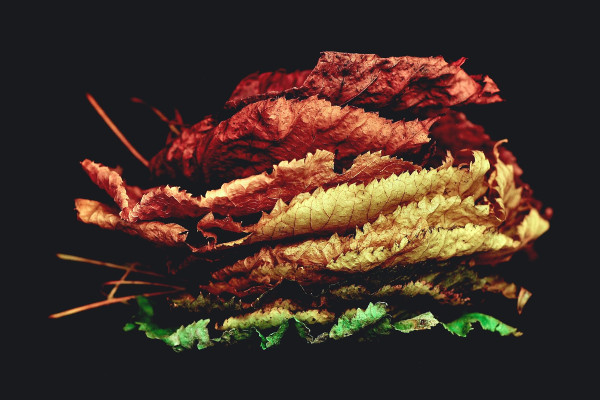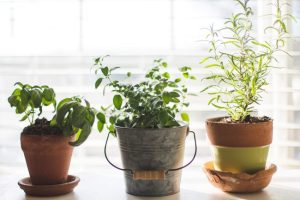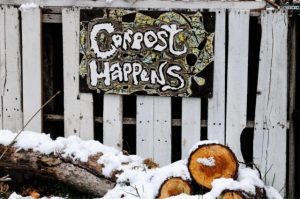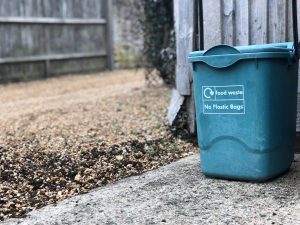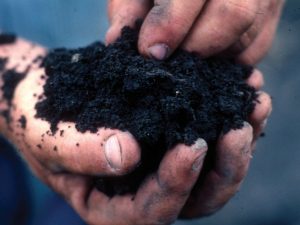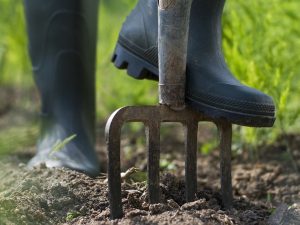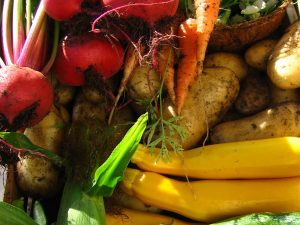Are you ready to make compost in your back garden? From hot to cold composting and more besides, our friends at Ethical.net share how you can make the most of composting outdoors.
Missed the previous installments? Catch up on the fundamentals in Part 1 here and indoor composting methods in Part 2 here.
Methods for outdoor composting
If you do have a garden, regardless of size, it is unlikely that an inside composting system would cope with all the organic matter it produces. To make the most of your space, and ensure it remains beautiful and productive, composting organic matter is important. Even if you are already composting food waste indoors, consider how bulkier materials such as trimmings, fallen leaves, grass clippings could be made use of.
There are three main methods of outdoor composting:
Cold composting
Cold composting outside is exactly the same as simple composting inside; the only difference is that the container will likely be much larger. Cold composting might take place in:
- A heap of materials in the corner of your garden
- A corral area created from wood pallets or other reclaimed materials
- Any barrel or bin (with adequate aeration)

Credit: Ethical.net
When choosing a spot for your composting, it is important to consider how you use your garden, and what other elements it contains. For ease, it is helpful to locate it close to the sources of materials, and also to the growing areas where the finished compost will be used.
However, it is preferable to not place your compost close to doors or windows, or to an outdoor seating area. While aerobic composting is far less smelly than anaerobic composting, some smells are inevitable – and since outdoor heaps will often be uncovered, this is a more important consideration than for composting indoors.
Though an outdoors cold composting area will generally remain open to the elements, it is important to be able to cover it when necessary. Heavy rain can cause compost heaps to become waterlogged, washing away nutrients. In summer, a cover can conversely reduce moisture loss.
Once again, two compartments, bins, or sections will mean that one can be filled while the other fully matures.
Items to avoid in a cold composting heap or bin
As with composting inside, certain items shouldn’t be put in your compost. In addition to those mentioned above, also avoid:
- Large branches (these will take too long to break down). Instead, use these as supports around your garden, or to make Hügelkultur beds (see below)
- Evergreen leaves (again, these will take too long to break down)
- Pine needles (these can be too acidic)
- Coal ash.
- Large lumps of food (cakes, bread, etc), which may attract rodents. (Consider composting food scraps inside before adding them to your heap if there is a problem with mice or rats in your area)
Composting in place
One of the easiest ways to return nutrients to the garden system is to simply layer organic matter on the soil surface, allowing it to compost in place. Sometimes called ‘sheet mulching’, these tiers of organic matter create a rich, friable planting medium. This mulch is similar to a forest floor, where leaves and debris falling onto the soil surface and are broken down in place, feeding the trees above and completing the cycle. Bacteria, fungi, and other soil biota will help to break down material into compost, which will be incorporated into the surrounding soil over time.
If you have a garden and would like to start new growing areas for planting foodstuffs, composting new garden beds in place can speed up the process of establishing your new and improved garden.
A ‘lasagne bed’ is the process of building up a fertile growing area, in the same way that you would build up the layers in a compost bin or heap:
- Begin by creating the edging for your new bed or beds, and lay cardboard on the grass or soil within that boundary
- Next, place a layer of twigs, dry leaves, straw or other ‘brown’ materials
- Then add a layer of grass clippings, green leaves, and fruit and vegetable kitchen waste
- Add further alternating brown and green layers to the desired depth
- Finish with a top layer of compost or soil
- Water well, then plant out your new growing areas
The materials in a lasagne bed will break down over time in exactly the same way as in a composter or heap. In this case, however, the compost is already exactly where it needs to be.
Hügelkultur
A variation on the theme of composting in place, Hügelkultur has the added benefit of utilising larger branches and logs from your garden. Hügelkultur (German for “mound culture”) is a gardening method which involves creating raised, mound-shaped growing areas.
Hügelkultur mounds comprise layered compostable materials, but rather than being laid on the ground, they are piled around a core of rotting wood, which holds moisture and promotes excellent fertility. These compost piles also provide variation in growing conditions, allowing creation of the right growing conditions for a wider range of plants.

Credit: Ethical.net
Hot composting
As the name suggests, hot composting involves decomposition at higher temperatures, in special hot composting containers, or with the use of straw/straw bales. Benefits include acceleration of the process, killing weed seeds, and an increase of kitchen scraps that can be safely dealt with.
Another way to deal with weeds, which can’t usually be added to compost heaps, is to process them into another type of liquid feed. Weeds that have set seed, or which would spread from root sections, can be killed thoroughly through submerging them in a bucket of water (with a lid, as the mix can really stink!). After being left to decompose, strain and dilute the resulting liquid by one to three, and water your plants with it (especially leafy plants that like a lot of nitrogen).
Troubleshooting a compost system
Compost is too wet
Drain water from the container, add more brown material, or cover the compost to prevent waterlogging from heavy rain.
Compost is too dry
Add a little water to the container, or soak the outside of the heap (ideally with rainwater harvested on your property).
The compost stinks
It has likely become anaerobic. Turn or fork through the mix to increase aeration and to get a better mix of brown and green materials, check that ventilation is adequate, add more brown materials, and make sure you don’t add too much green in one go.
There are flies in the compost
Compost flies will only survive when the temperature is ideal, and they have a ready supply of food. Adding more browns, and making sure to always cover new green materials with brown ones, can dry out the heap a little, discouraging this problem. If you have fruit flies, try turning the heap for increased aeration; decomposition will speed up, increasing heat at the core and destroying eggs.
Big chunks haven’t broken down
Leave the compost longer; it may just need more time to decompose. Ensure conditions regarding moisture and oxygen are as they should be. Speed the process by adding more green, nitrogen-rich materials. In an outdoors heap, nettles and comfrey are both excellent compost activators.
By now, you should have a much better idea of how to create compost, and the best way to do so where you live. So, if you don’t already compost, now is the perfect time to start!

Credit: Ethical.net
Shared and adapted from an original article by Elizabeth Waddington here on the Ethical.net blog. Main image: Davide Ragusa via Unsplash
 About the author
About the author
Ethical.net is a collaborative platform for discovering and sharing ethical alternatives, whether purchasing from a social enterprise, thrift shopping, or learning how to fix your old phone instead of buying a new one. They aim to make ethical the new normal.

